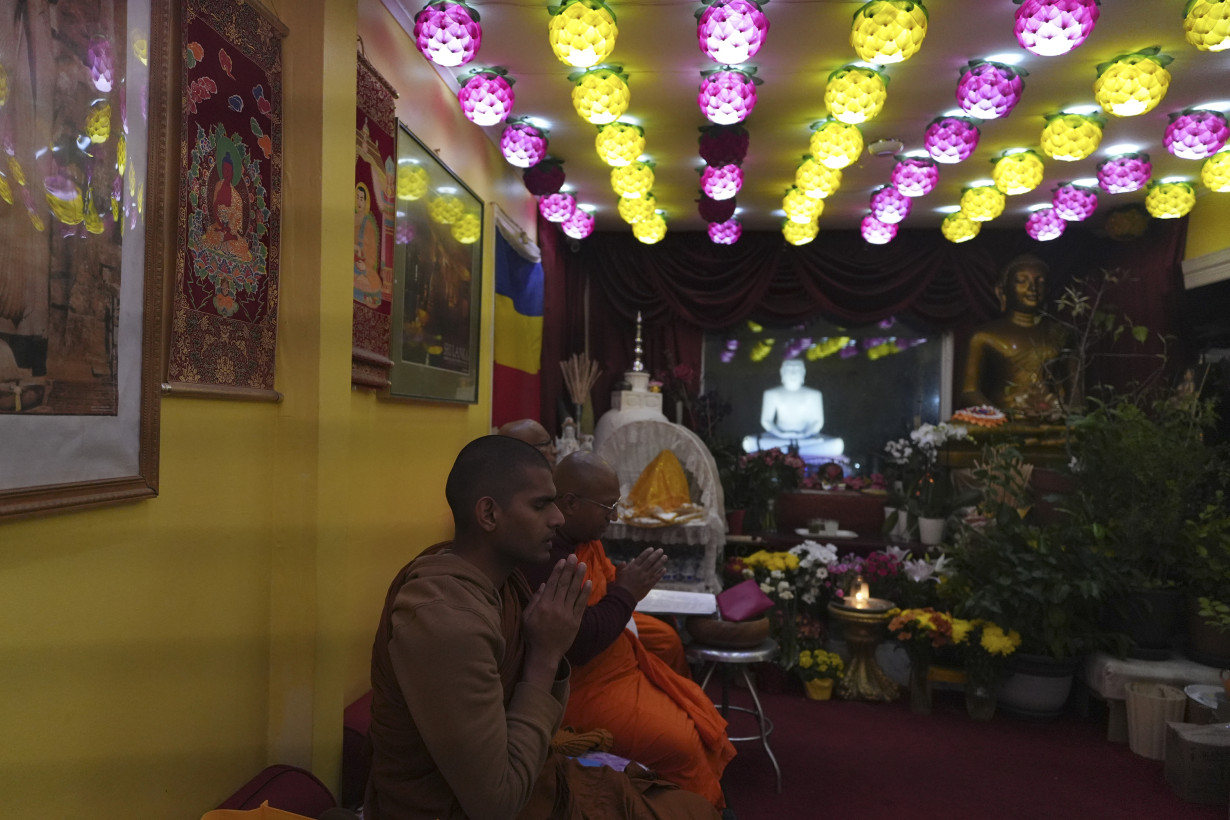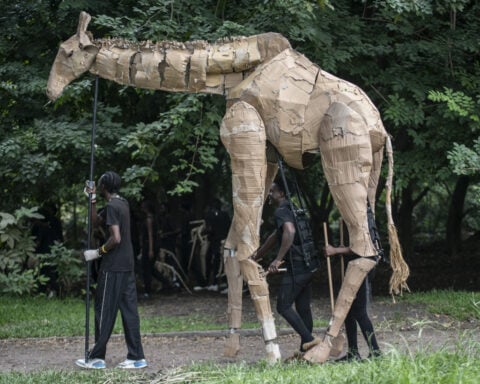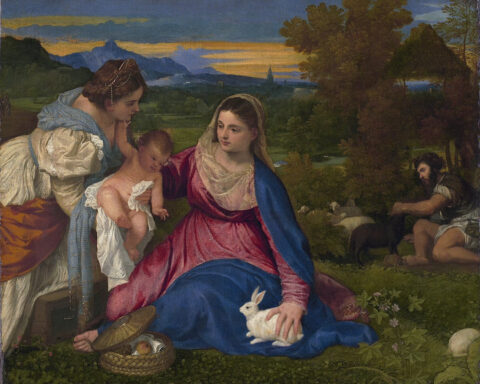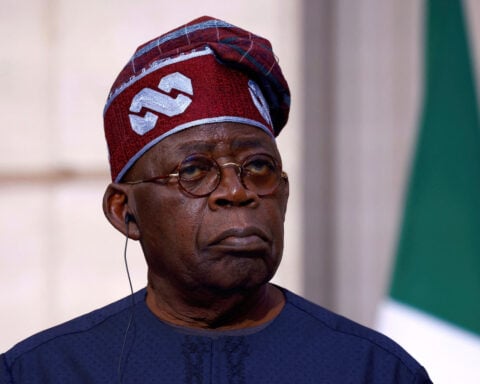FRANKLIN TOWNSHIP, N.J. (AP) — Just off a state highway in New Jersey, one of the largest statues of the Buddha in the United States appears unexpectedly in the middle of a backyard.
It rises 30 feet high from the woods in Franklin Township, near Princeton, where it was built a decade ago under the leadership of a Sri Lankan monk ordained in Theravada, one of the oldest forms of Buddhism. His dream? Uniting people of all faiths.
Today, the statue in the New Jersey Buddhist Vihara and Meditation Center has become a hub for interfaith efforts and a spiritual home for practicing Buddhists, Hindus and Christians, reflecting New Jersey’s diverse religious landscape.
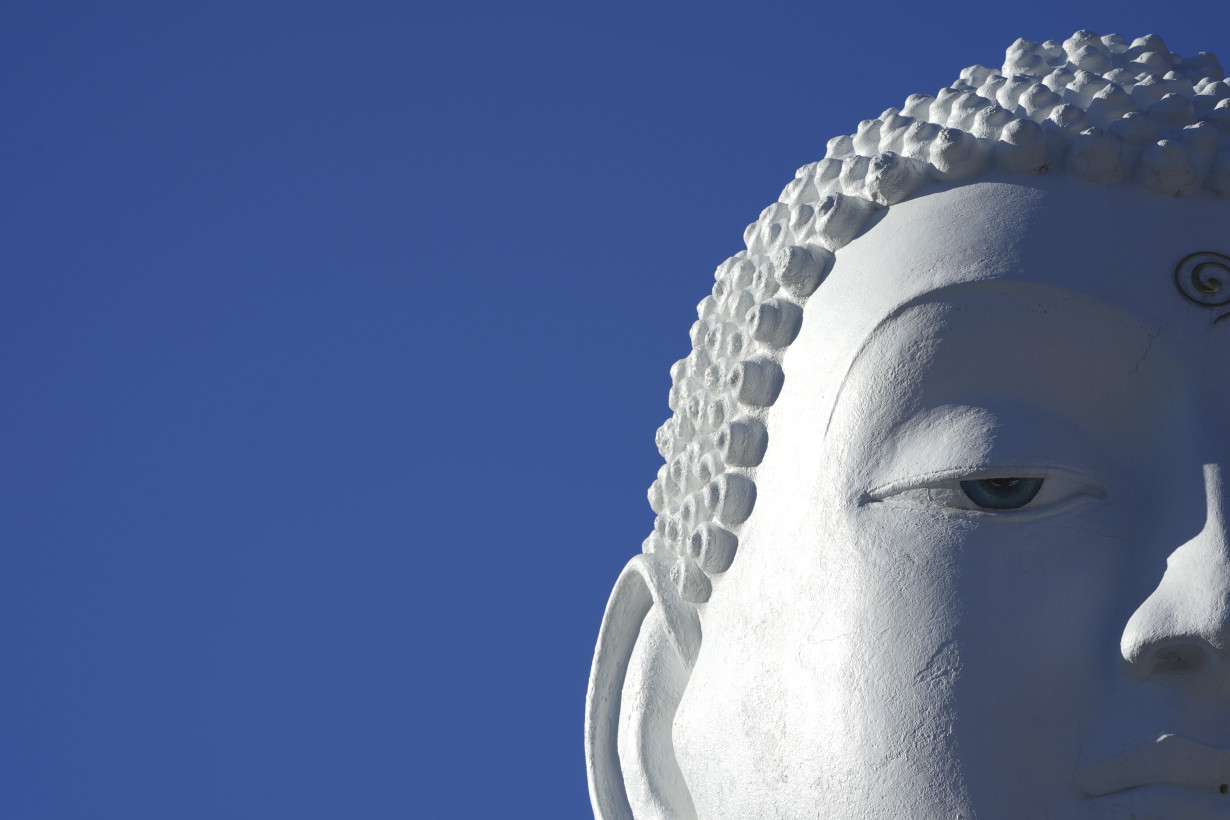
Among them: a Princeton University professor who grew up in a Korean Christian church and who follows Tibetan Buddhism; a leader of the local Nepali community who organizes interfaith gatherings and tends to a peace garden at the premises; and a woman who — after living near the statue for years — became a practicing Buddhist.
“It just seems to be a nexus where a lot of people connect,” said Daniel Choi, who teaches writing at Princeton and has been meditating in front of the Buddha statue since 2015.
“It definitely feels like a public shrine,” he said, adding that it’s hard to find such places. Most Buddhist centers in the U.S. are run by private organizations, “where you wouldn’t be able to go in for open practice," he said. "So that’s what’s unique.”
It’s also uniquely New Jersey, he said.
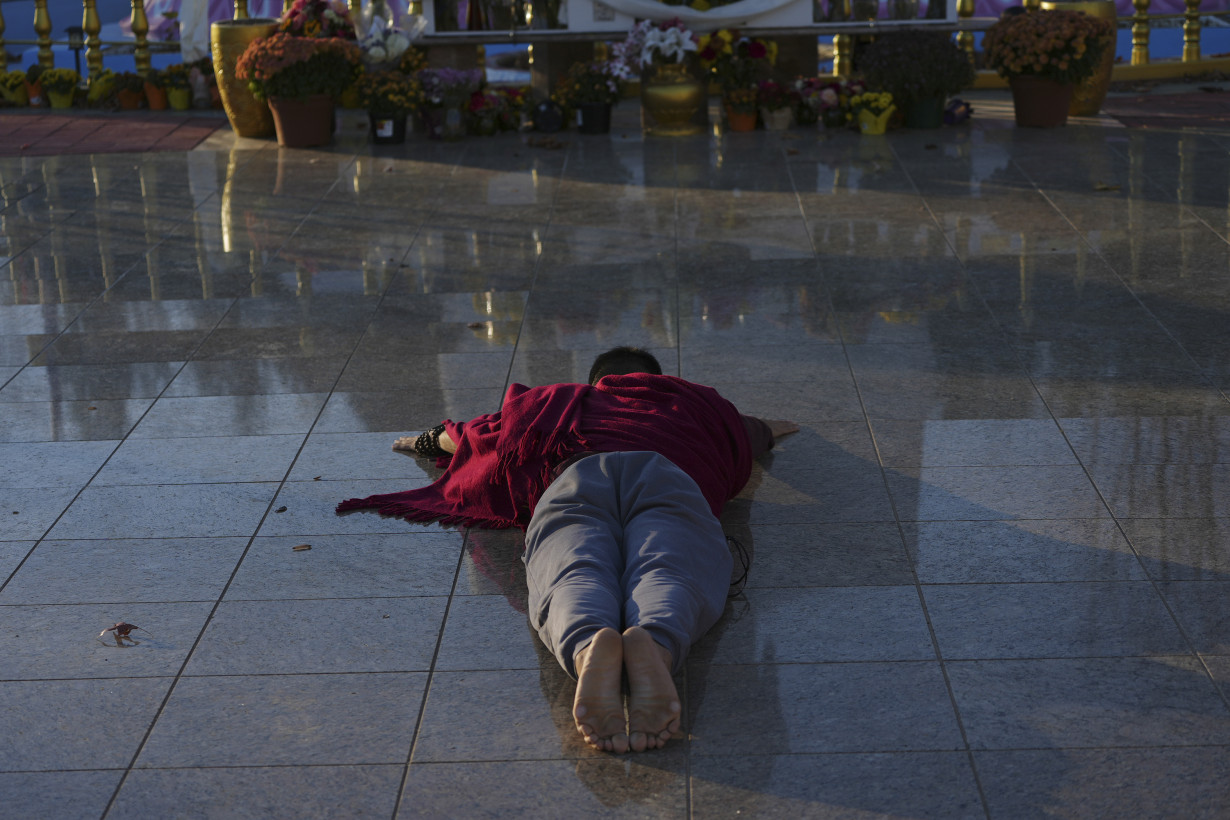
“You hear traffic; you hear cars rushing by; you hear airplanes flying above … You hear the construction work going on," he said. “Even though there are signs that say, ‘Please observe noble silence,’ you have people laughing, chatting, as they ’re coming out to give their offerings.”
“It’s on Route 27!” he added, laughing at the untraditional location of such a shrine.
“And then, the mix of people: you have Sri Lankans…you have Koreans, such as myself, or you have Chinese Mahayanas," he said. "You have people who are Indian practicing, you have new Japanese Buddhists coming in, you have Nepalese Buddhists. … it’s open, and that’s very New Jersey.”
The New Jersey Buddhist Vihara, a monastery, follows Theravada, the predominant form practiced in Sri Lanka, Burma and Thailand. But it’s welcoming of all Buddhist traditions and other faiths.
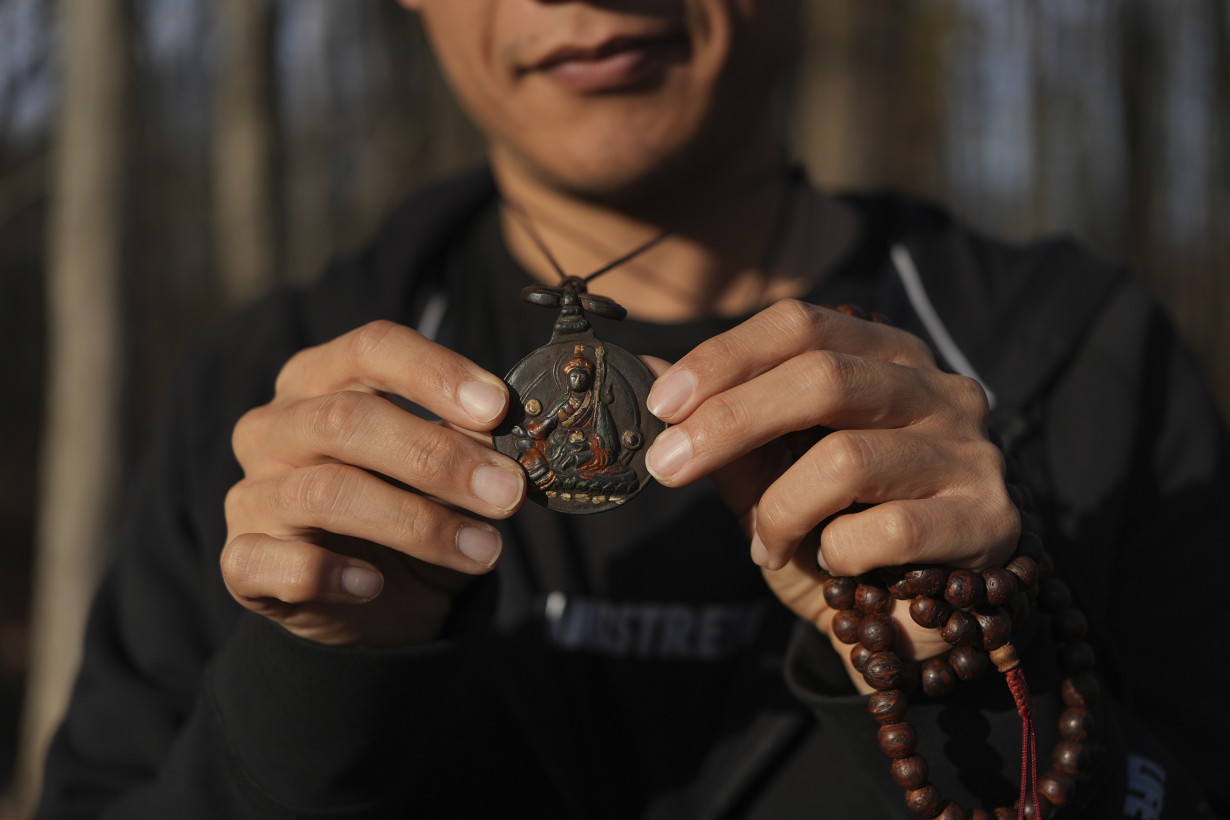
When Choi first visited, he was pleasantly surprised to find a statue of Kuan Yin, the Buddhist goddess of compassion who is a prominent figure in Mahayana Buddhism commonly practiced in Tibet, China and Korea. After growing up in a Korean church, he had practiced Zen and Tibetan Buddhism.
“For me that was very welcoming because I thought: ’OK, so there’s something for me as well,'” said Choi, holding mala beads in his hand and with a maroon meditation shawl draped over his shoulders as he prepared to chant in front of the statue.
“I’ve seen Buddhists of different stripes practicing,” he said, adding that the statue also draws in curious tourists and passersby.
“They just sit in front of the statue on the benches, take in the moment, and just drink in the vibe.”
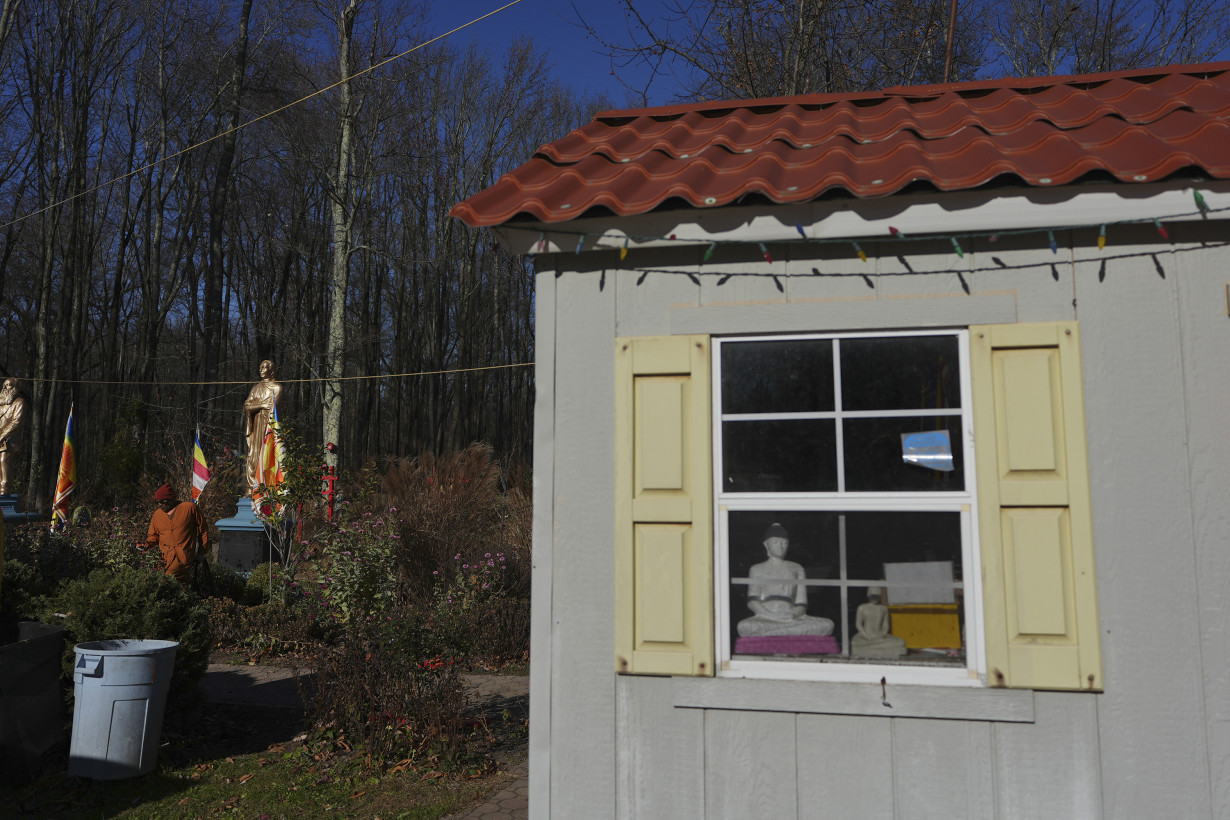
The center’s trees are covered in colorful Tibetan prayer flags that flutter in the wind near an interfaith peace mural painted by local students. It’s decorated with symbols representing different world religions – from Baha’i and Christianity to Sikhism and Zoroastrianism – all practiced in the Garden State.
“Our Somerset County has become a microcosm of the world,” said Tulsi Majarjan. As a director of the Friends of Nepal-NJ organization, he has led interfaith projects, including the mural and a peace garden.
“When I first came here to New Jersey 35 years ago, I used to drive all the way to Long Island to go to the Buddhist temple,” he said of the almost the three-hour drive.
“Now, within ten minutes…from my home, I can go to the Buddhist temple. But there are so many others,” he said listing nearby Jain, Sikh and Hindu temples that make him proud of the religious diversity in central New Jersey.
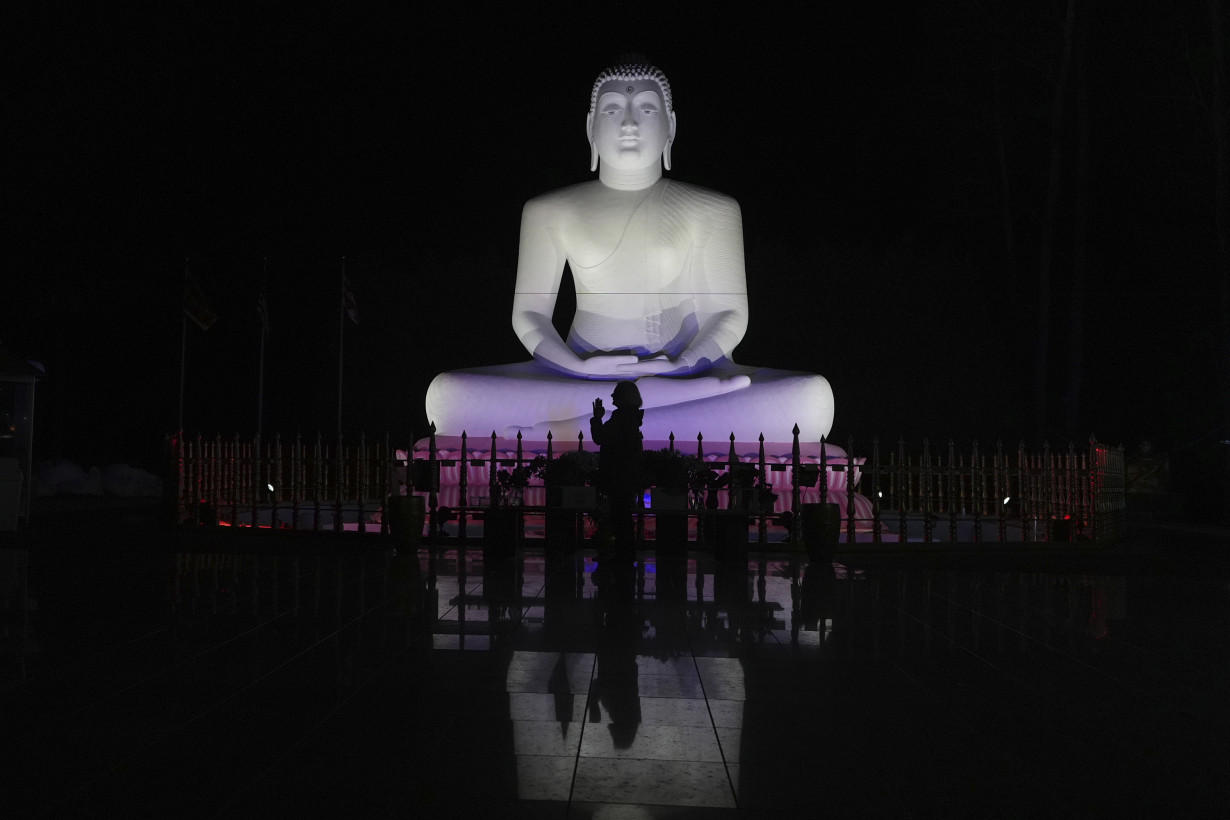
“And obviously, the statue of the Buddha in this temple,” he said. “Anybody who comes to that temple, feels so calm and collected once they see that big Buddha. There’s no magic to it. But you have to be there to feel it.”
Carol Kuehn knows that feeling: “It’s the first thing I look at in the morning,” said the 76-year-old retired high school teacher.
From the windows of her home next to the monastery, she awakes to a sight of the impeccably white brick and mortar Buddha sitting on a pink concrete lotus flower.
Raised as a Presbyterian, she became interested in Buddhism after reading Herman Hesse’s novel, “Siddhartha.” She also began practicing yoga.
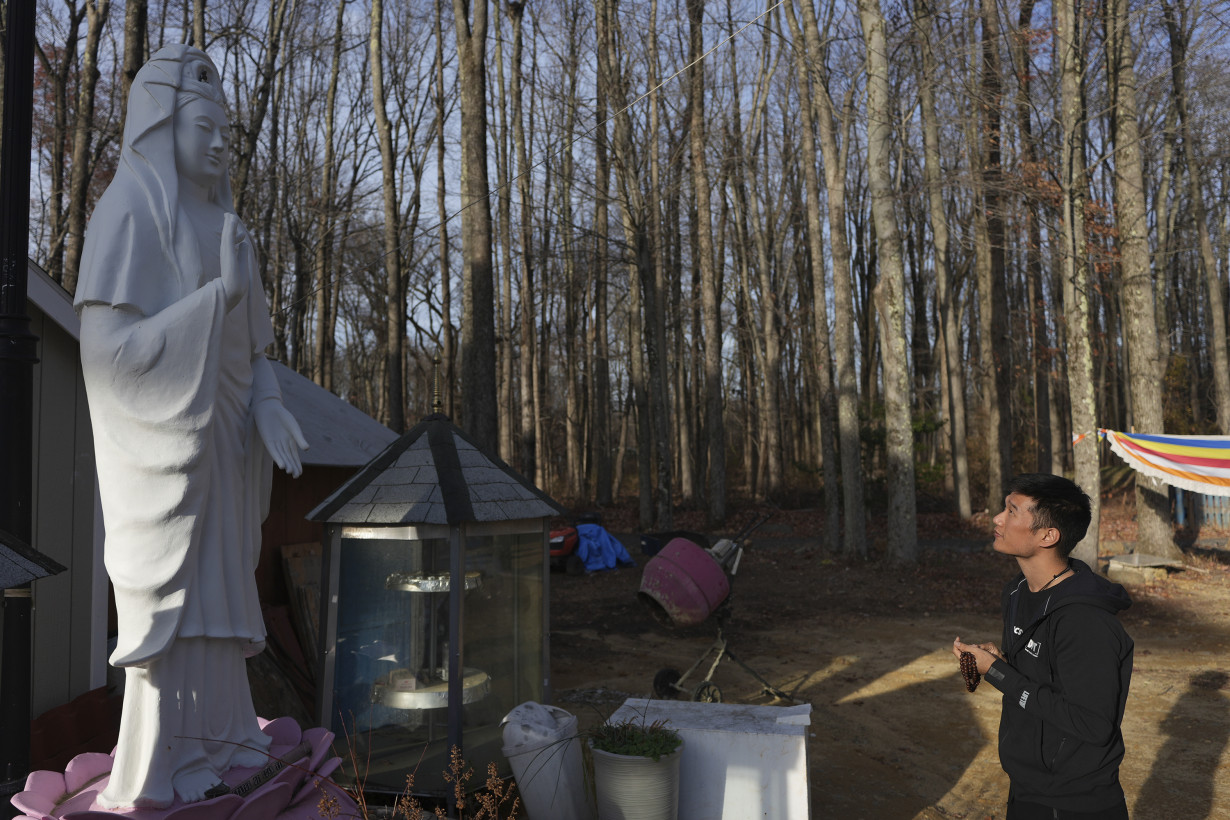
But she only became a practicing Buddhist after her saffron-robed neighbors arrived in 2002. Buddhism, she said, helped her deal with grief after the death of her husband.
“The whole point of Buddhism is to live in the moment,” she said. "That’s been a major change in my life, dealing with grief. Meditation gave me a way to focus on the positive.”
On a recent chilly evening, she walked a few steps from her house into the monastery home of the center’s abbot, the Venerable Hungampola Sirirathana Nakaya Thero. Surrounded by framed posters of Sri Lanka, they chanted sutras in Pāli language in front of a flowered-decorated altar overlooking the Buddha in the yard.
“It’s something I can look at and think about the qualities that the Buddha stood for,” Kuehn said. “It’s peace, understanding, compassion, respect for all and living in the moment.”
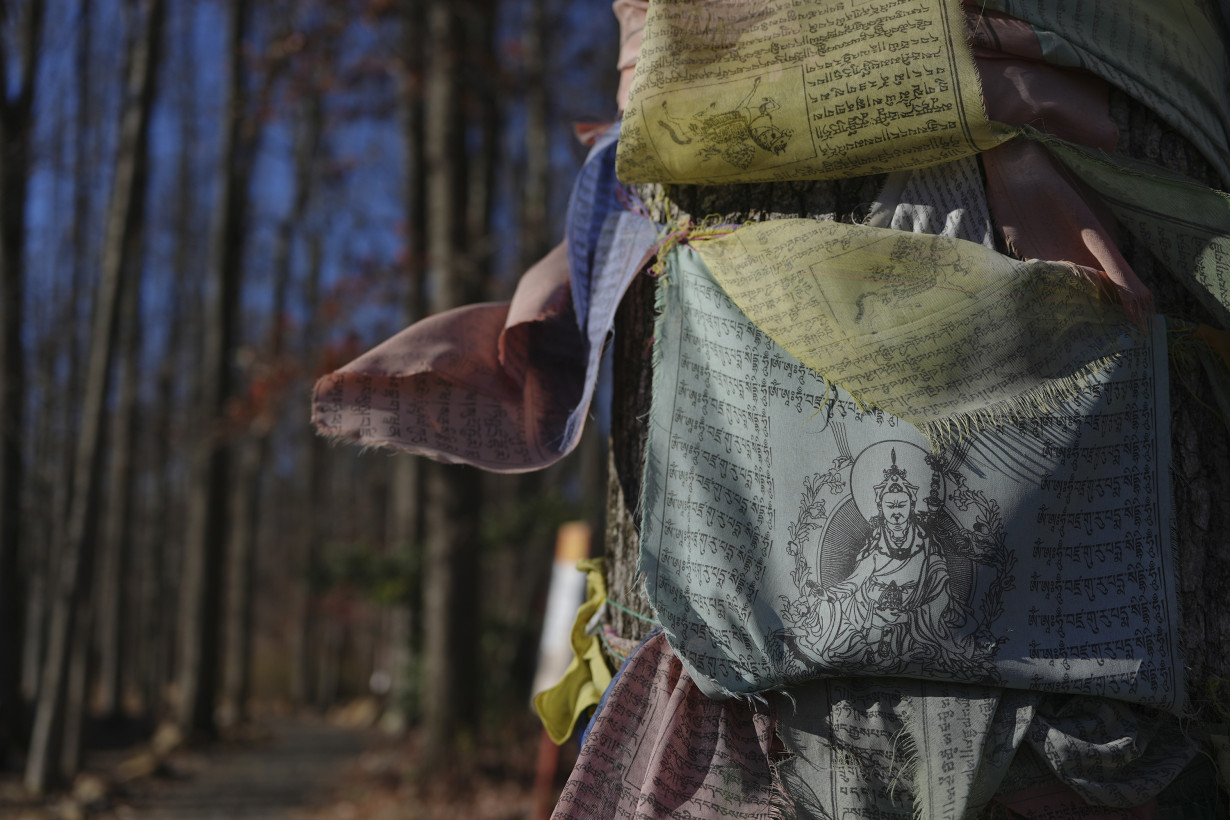
__
Associated Press religion coverage receives support through the AP’s collaboration with The Conversation US, with funding from Lilly Endowment Inc. The AP is solely responsible for this content.

 Trump has begun another trade war. Here's a timeline of how we got here
Trump has begun another trade war. Here's a timeline of how we got here
 Canada's leader laments lost friendship with US in town that sheltered stranded Americans after 9/11
Canada's leader laments lost friendship with US in town that sheltered stranded Americans after 9/11
 Chinese EV giant BYD's fourth-quarter profit leaps 73%
Chinese EV giant BYD's fourth-quarter profit leaps 73%
 You're an American in another land? Prepare to talk about the why and how of Trump 2.0
You're an American in another land? Prepare to talk about the why and how of Trump 2.0
 Chalk talk: Star power, top teams and No. 5 seeds headline the women's March Madness Sweet 16
Chalk talk: Star power, top teams and No. 5 seeds headline the women's March Madness Sweet 16
 Purdue returns to Sweet 16 with 76-62 win over McNeese in March Madness
Purdue returns to Sweet 16 with 76-62 win over McNeese in March Madness
